Contactless Guest Experience: The Future of Hospitality
Oct 30, 2025
 Mika Takahashi
Mika TakahashiPopular Categories
Hotel Technology & InnovationHotel Operations OptimizationDigital MarketingIndustry TrendsRevenue ManagementHospitality Industry
Popular Categories
Trending Post
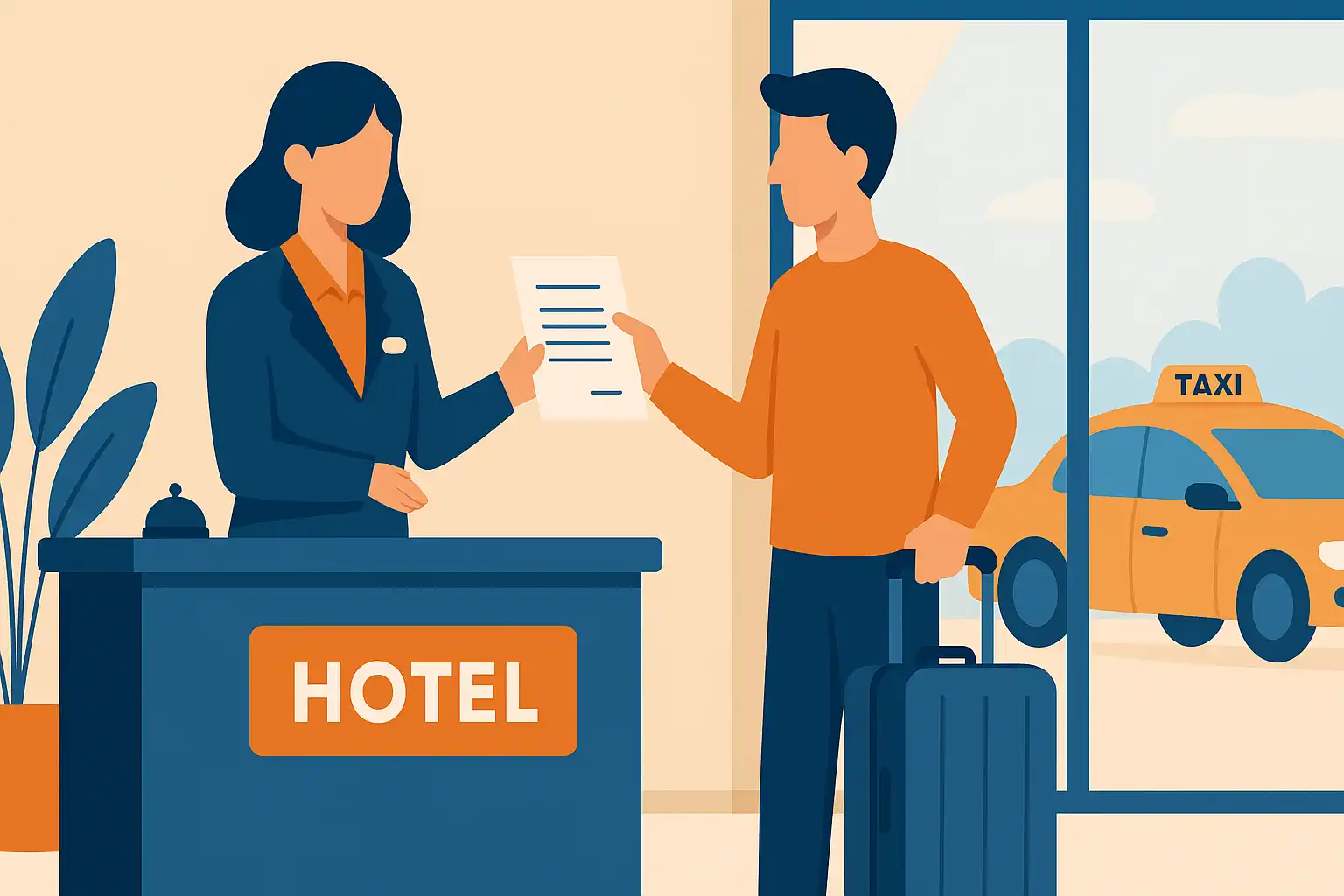
Hotel Walk Letter Template: Professional Guest Communication

Online Travel Agents: What They Are and How They Work
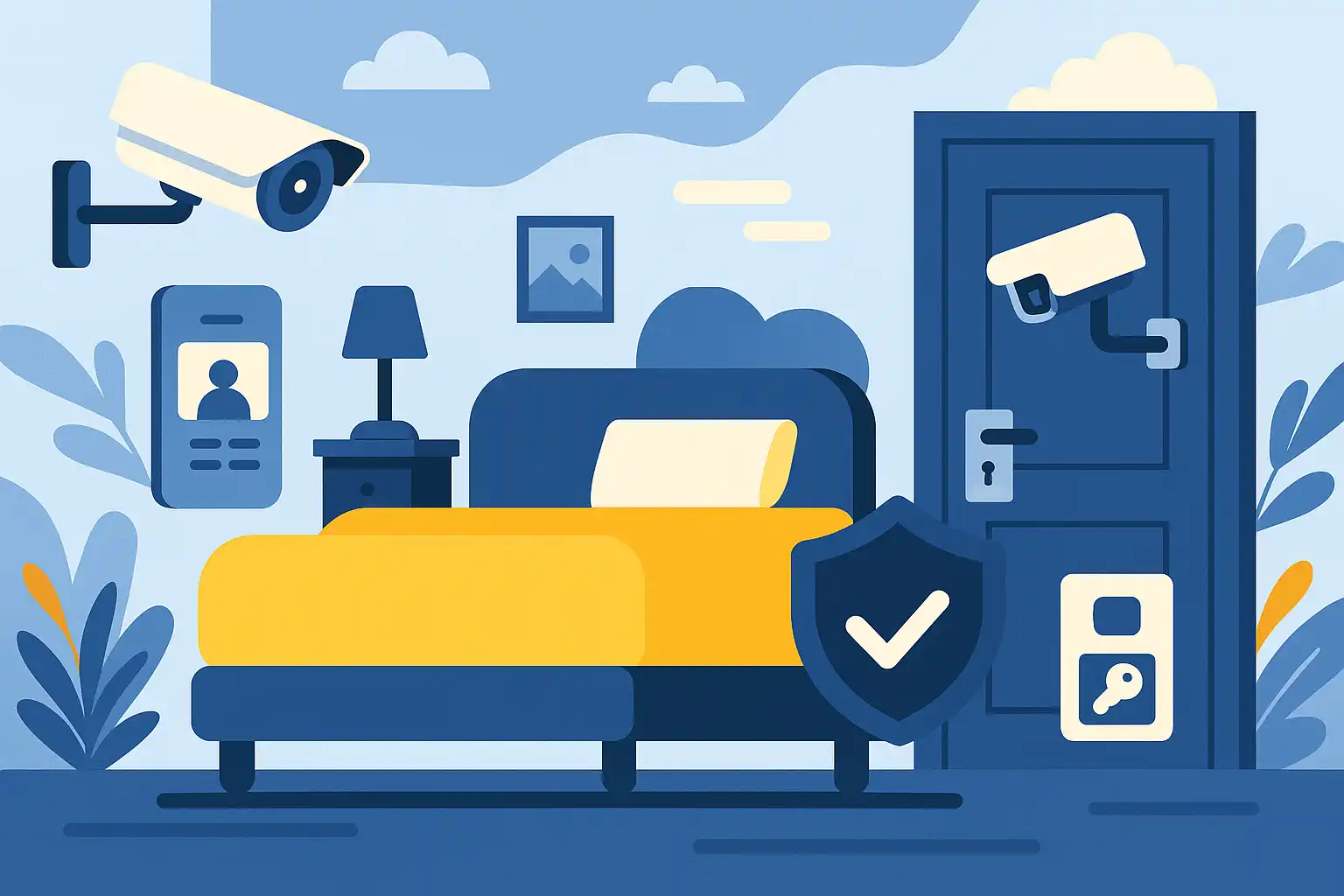
Hotel Security Systems: Modern Protection Solutions

Hotel Advertising: Complete Guide to Boost Bookings and Revenue
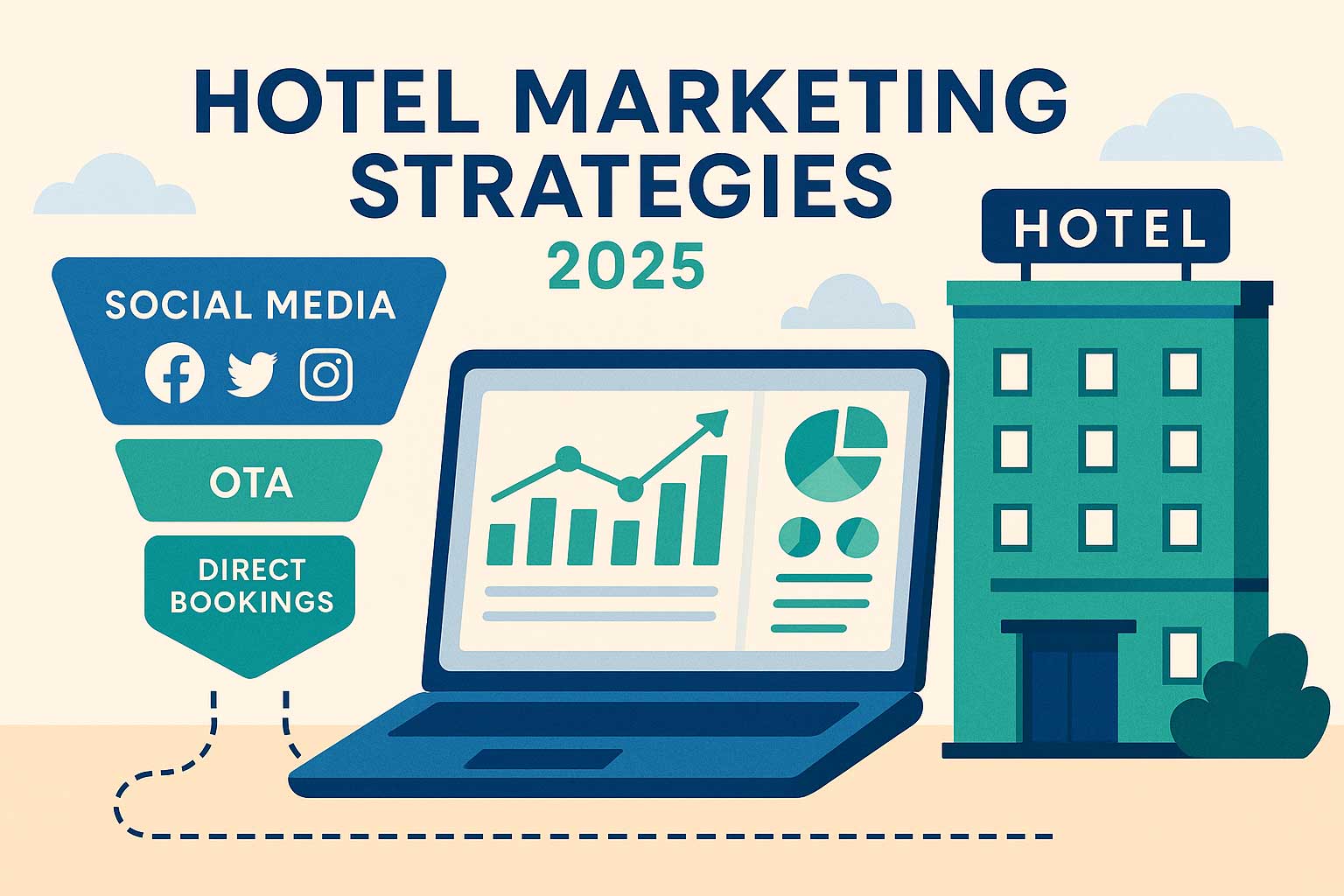
25 Hotel Marketing Strategy Ideas for 2025: Complete Guide

AI Reservation Agent: Revolutionizing Hotel Booking and Guest Experience

PMS Communication: Streamlining Property Management Through Effective Guest Messaging
Table of contents
Hotels around the world are realizing that the contactless guest experience is much more than just a pandemic necessity—it's become the cornerstone of modern hospitality. The hotel industry has shifted toward digital-first service, with 73% of guests now preferring contactless options even as health concerns fade. This change reflects evolving guest expectations where convenience, efficiency, and autonomy matter more than ever, sometimes even more than traditional face-to-face interactions.
So, what exactly is a contactless guest experience? It’s all about using digital tools to remove physical touchpoints between hotel guests and staff—or shared surfaces. Whether it’s checking in via smartphone or controlling your room with your voice, these technologies are transforming how hotels operate and how guests interact with services. Hotels that fully embrace contactless solutions often see big boosts in operational efficiency, guest satisfaction, and even revenue.
Getting comfortable with contactless tech isn’t just about keeping up—it’s about setting your property up for long-term success in an industry where guest expectations are moving steadily toward digital integration and personalized service.
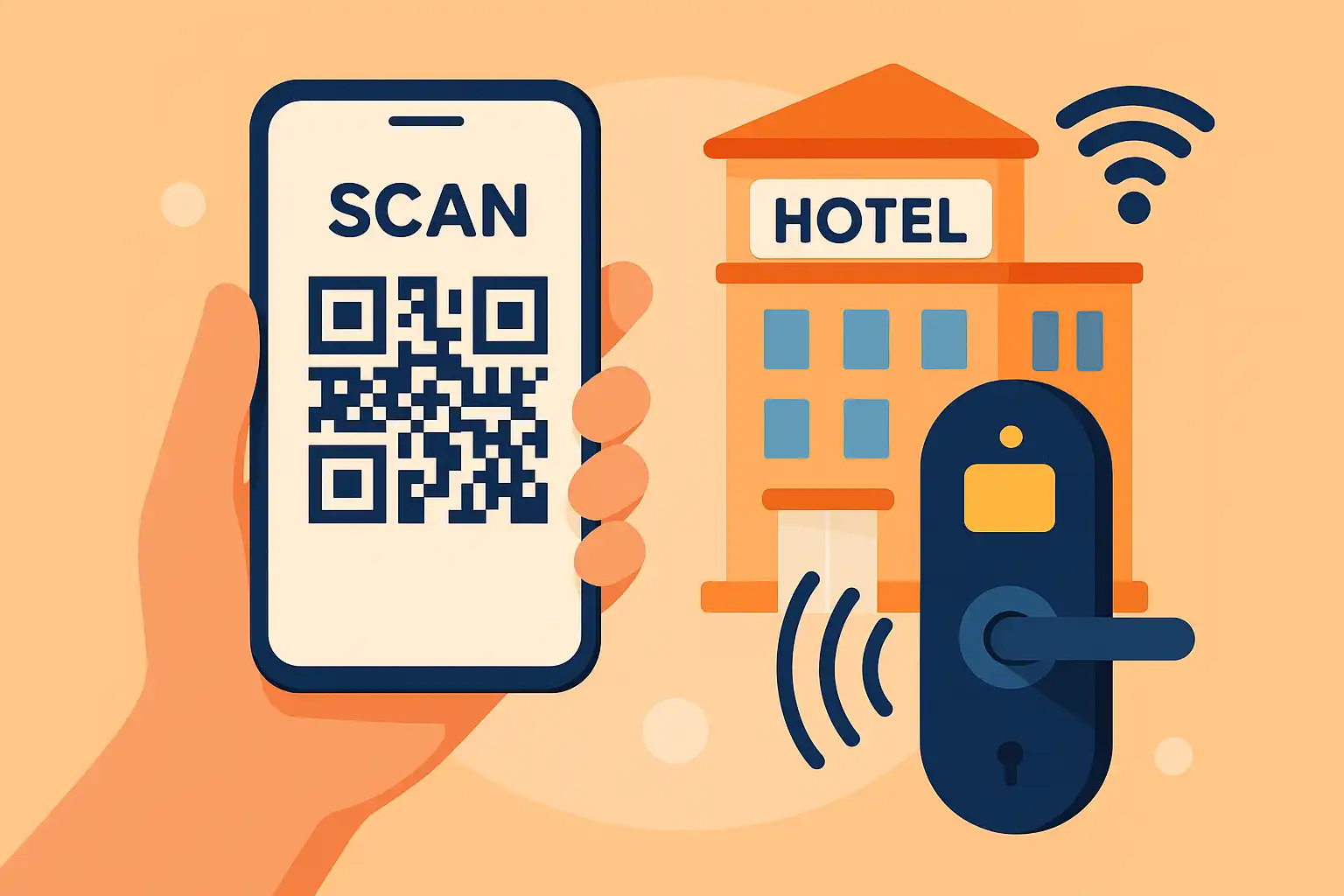
What is Contactless Guest Experience?
In simple terms, contactless technology in hospitality uses digital interfaces and automated systems so hotel guests can access services, pay, and communicate without physical interaction or shared touchpoints. Think digital check-in and check-out, mobile room keys, contactless payments, and ordering services right from your phone.
This trend started with early mobile check-in pilots by big hotel chains back in the mid-2010s but really took off during the pandemic. What’s clear now is that it’s here to stay—not just because of health concerns but because it offers real operational benefits. Modern contactless hospitality smoothly integrates property management systems with mobile apps, keyless entry, and automated service delivery to create a seamless experience for guests.
What’s driving this shift? Data shows guest preferences have permanently changed. Hotels that initially adopted contactless solutions out of necessity found they improved guest satisfaction, cut operational costs, and provided valuable insights for personalized marketing. By 2024, optimizing the contactless guest journey has become standard across all types of properties, from budget stays to luxury resorts.
Here’s some telling stats: 73% of guests prefer contactless options even now, post-COVID-19, and 88% expect businesses to keep expanding digital, contact-reducing initiatives. The smart hospitality market reflects this too—it’s more than doubled from $6 billion in 2019 to over $12 billion in 2025, showing strong investment in contactless guest experience tech.
Key Benefits Driving Hotel Adoption
Contactless solutions bring real, measurable improvements to hotel operations. Hotels using these systems often see a 40% drop in front desk interactions and save 15-20% of staff time, freeing up hotel staff to focus on delivering high-quality service and anticipating guest needs. These efficiency gains help reduce labor costs without sacrificing guest service.
Guest satisfaction is a huge win here. Hotels report Net Promoter Scores jumping by 18-25 points after rolling out contactless technology. Guests love the autonomy and speed of digital check-in, the convenience of mobile keys, and the ability to get what they need without waiting in lines or coordinating with front desk staff. Happier guests mean more repeat visits and glowing reviews.
Revenue also gets a boost. Automated upselling during digital check-in presents new opportunities for income that don’t rely on staff availability or training. Mobile apps can offer room upgrades, amenity packages, and local experiences at just the right moment in the guest journey, often converting 25-30% better than traditional upselling. Plus, personalized offers based on guest history make acceptance rates even higher.
Cost savings go beyond labor. Hotels cut down on plastic key cards, printed materials like folios and welcome packets, and paper registration forms. These savings add up, especially for larger properties, and also align with growing guest interest in environmentally friendly practices.
Another major advantage is data. Contactless systems collect detailed guest preferences, service usage, and spending habits, helping hotels tailor marketing campaigns and optimize operations. This data-driven approach means hotels can anticipate guest needs and deliver personalized experiences at scale.
Essential Contactless Technologies for Hotels
Digital Check-In and Check-Out Systems
At the heart of the contactless guest experience are mobile-friendly platforms that integrate seamlessly with property management systems. Guests can complete the whole check-in process from pre-arrival to room assignment without ever needing to interact with staff.
Features like pre-arrival ID verification and payment processing let guests upload documents and payment info securely before arrival, speeding up the process so they can head straight to their rooms.
Smart room assignment tools that offer upgrade options during check-in help maximize revenue while letting guests choose enhancements on their own terms. These systems remember guest preferences and suggest relevant amenities or services automatically.
Express checkout with automatic folio delivery via email or SMS means guests can leave when they want without stopping at the front desk. Charges are processed through saved payment methods, reducing workload and making departures hassle-free.
Mobile Key Technology
Mobile keys replace physical cards with encrypted digital credentials stored on guests’ smartphones, which communicate with door locks via Bluetooth Low Energy or NFC. This means guests can unlock their rooms with a tap on their phone, no need to carry or return plastic keys.
These digital keys are secure, reliable across devices, and work even if the phone battery is low. Access permissions expire automatically at checkout, improving security and reducing the need for staff to manage key returns.
Staff still have emergency override access for maintenance or safety, and detailed logs keep track of room entries to ensure security and smooth operations.
Contactless Payment Solutions
Guests can pay quickly and securely with tap-to-pay options like Apple Pay, Google Pay, or contactless credit cards throughout the hotel—from restaurants to spa services. These payments integrate with the hotel billing system so guests can charge purchases directly to their room.
Mobile apps also let guests order room service or amenities and pay right from their devices without calls or in-person interaction. Real-time order tracking and notifications enhance transparency and guest satisfaction.
Automatic charging to stored payment methods reduces billing surprises and disputes, while QR code payment options provide contactless convenience without requiring app downloads.
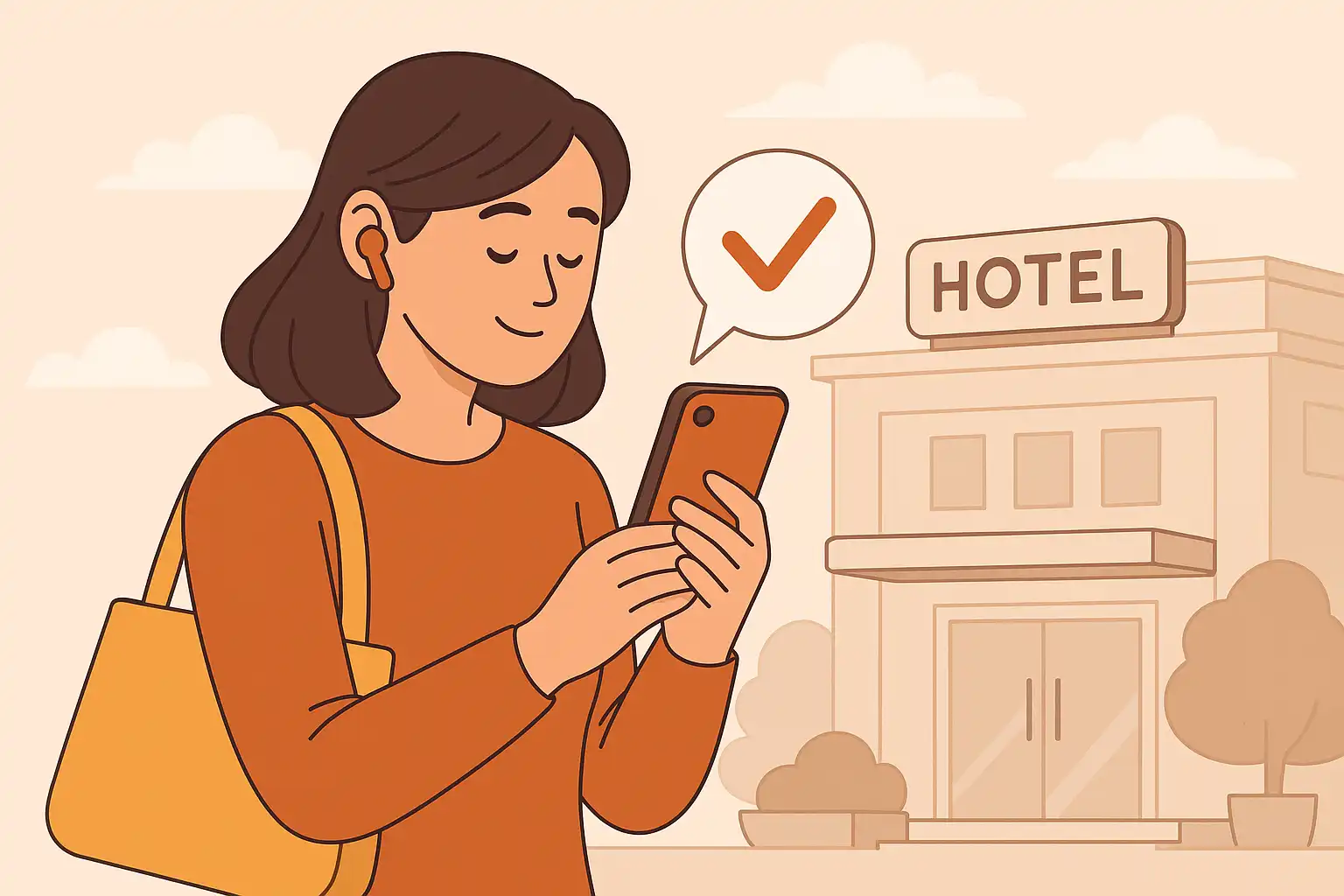
Guest Journey Implementation Strategy
Pre-Arrival Phase
The contactless journey often begins before guests even leave home. Automated emails sent 48 hours before arrival include contactless check-in links, app download instructions, and details on available digital services. This early engagement helps guests prepare for a smooth arrival.
Digital welcome packages replace printed materials with mobile-friendly info like WiFi passwords, property maps, and local tips. These can be updated in real-time and personalized based on guest interests.
Personalized upselling suggestions based on guest history promote room upgrades, dining reservations, spa visits, or local experiences, creating extra revenue and enhancing the guest’s stay.
Arrival and Check-In
Self-service kiosks in the lobby offer an alternative for guests who prefer a more traditional check-in but still want to avoid lines. These kiosks integrate with mobile check-in systems, giving guests options that suit their comfort level with technology.
Digital concierge services accessible via QR codes or mobile platforms provide local recommendations, booking options, and instant info without wait times. Virtual assistants help guests navigate the property and find amenities without staff intervention.
Many hotels use a hybrid approach—offering contactless efficiency while keeping staff available for guests who want personal interaction. This balance helps satisfy diverse guest preferences and keeps operations running smoothly.
In-Stay Services
QR code menus and mobile ordering eliminate physical menus and speed up food and beverage purchases. Guests can customize orders, check nutrition info, and pay all from their phones.
Digital request systems let guests communicate housekeeping, maintenance, or concierge needs instantly and track progress without phone calls or front desk visits.
Voice-activated room controls add convenience and support contactless principles by letting guests adjust lighting, temperature, and entertainment hands-free.
Real-time messaging platforms connect guests directly with hotel staff via their preferred channels, ensuring quick responses and smooth communication.
Implementation Challenges and Solutions
Not all guests are tech-savvy, so hotels need to provide clear instructions, support channels, and alternative options for those uncomfortable with contactless systems. Training staff to assist guests and troubleshoot technology is essential.
Integrating new contactless tools with existing hotel infrastructure can be complex and may require upgrades. Careful planning and audits help ensure all systems work together smoothly.
Maintaining a personal touch while reducing face-to-face interactions requires thoughtful service design. Hotels should identify moments where human contact adds real value and automate routine tasks to free staff for those moments.
Cybersecurity is critical as contactless systems handle sensitive data. Hotels must follow strict protocols, comply with regulations, and regularly train staff to protect guest information and payment details.
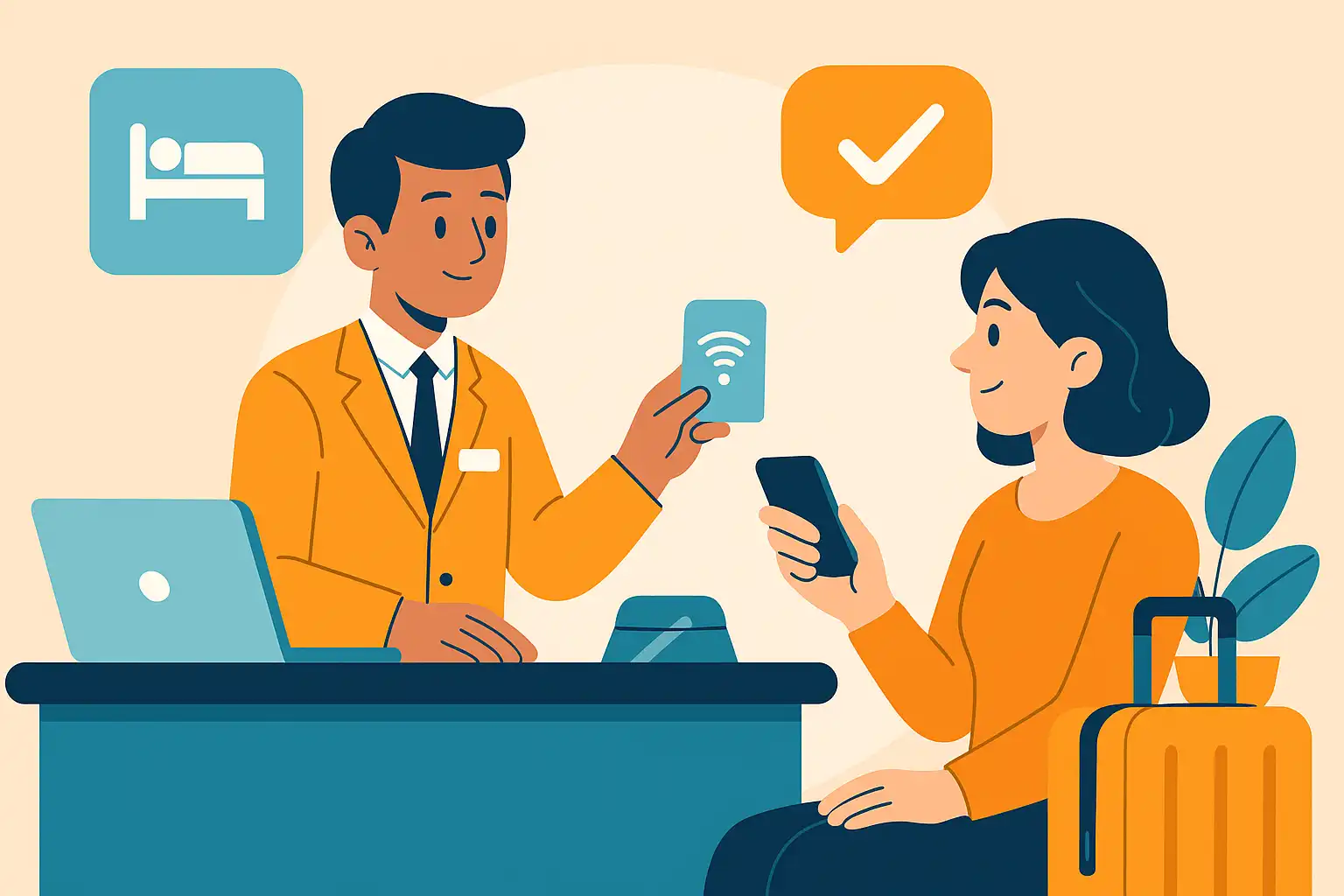
Measuring Success and ROI
Tracking guest satisfaction through Net Promoter Scores and review sentiment helps gauge the impact of contactless systems. Hotels should monitor feedback focused on convenience, efficiency, and service quality.
Operational metrics like check-in times, front desk interactions, and staff productivity show efficiency gains and help optimize workflows.
Revenue metrics, including upsell conversion rates and ancillary sales, demonstrate financial benefits beyond cost savings.
Cost savings from reduced printing, plastic key cards, and labor provide clear financial justification for contactless investments.
Monitoring guest adoption rates of contactless features guides training and marketing efforts to maximize usage.
Future Trends in Contactless Hospitality
Artificial Intelligence will take contactless guest experiences further by predicting guest needs, automating responses, and personalizing services at scale.
The Internet of Things will enable fully integrated smart rooms that adjust settings automatically based on guest preferences and optimize energy use.
Biometric authentication like facial recognition will replace physical IDs, making check-in even smoother and more secure.
Augmented Reality apps will enhance navigation and guest engagement, especially in large or complex properties.
Sustainability will remain a key benefit, with reduced paper use and energy-efficient operations appealing to eco-conscious travelers.
The contactless guest experience has evolved from a pandemic response into a core part of hospitality operations. Hotels that adopt comprehensive contactless solutions while preserving meaningful human interaction will be well-positioned for long-term success. This technology empowers properties to deliver personalized, efficient service that meets changing guest expectations and streamlines operations. Investing in contactless guest experience technology isn’t just smart—it’s essential for staying competitive in today’s hospitality landscape.
